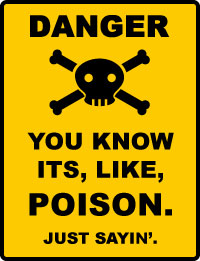
In a galaxy far, far away…as a global thought leader, you may often need to ”manage by mobile” and lead from a distance. Instead of ”eyeball management,” you need to be able to focus on ”results management” and trust that your employees are capable of achieving the goals you set for them even when you’re not physically present.
Some of the leadership skills remote managers display are similar to those of on-site managers. But multi-site, dispersed, virtual teams can present particular challenges for even the most experienced managers.
What challenges have you faced? How have you handled them? Take a few minutes and click here or comment below to share some of your experiences and tips with other thought leaders.
To kick start the conversation, here are 12 general observations and tips:
Instead of ”eyeball management,” you need to be able to focus on “results management.”
- Make your expectations concrete and measurable – for example, add structure by clarifying in writing short-term priorities and long-term goals.
- Check in regularly and spontaneously, formally and informally — for example, ”planned spontaneous interactions” might include virtual coffee chats and lunches or frequent check-ins with instant messaging.
- Keep it personal – for example, nothing will replace water cooler talks and coffee breaks, but take time to drop a personal note about something happening to the virtual employee – like a house move or a child graduating. Encourage a brief “sharing” time for all team members in regular meetings to help build team spirit.
- Be aware of the process the team is using and help them break it into manageable pieces with measurable results at key milestones.
- Don’t judge the process but judge the results.
- Set rules of engagement based on a consistent mission, purpose and values system.
- Agree on time boundaries — for example, what are the manager’s and the team’s expectations for sending or returning emails on the weekend, late at night or during the dinner hour.
- Set and model good communications practices — for example, what are the team’s rules on whom to cc: and what types of subject lines to include on emails.
- Listen better – for example, it’s much easier to miss subtle verbal clues when corresponding with telecommuters or distributed team members by telephone, video, Skype, etc.
- Remind on-site employees to listen to others on conference calls – for example, print out a photo of the remote employees and put them on the table or a chair during important meetings.
- Avoid engendering an ”us and them” mentality – for example, when virtual team members are mixed with co-located teams in headquarters, try overemphasizing the inclusion of voices outside the nucleus so that a “home-based” bias isn’t created inadvertently.
- Meet whenever possible in person, but particularly at the beginning of the distance employment relationship to minimize the virtual team member’s sense of isolation. Nothing replaces “face time”…nothing.
Do you need help improving communication as you manage remote employees from a galaxy far, far away from them? Ask, assess, then act. We’re here to help!
 Ahhhh, the Annual General Meeting (AGM). The Chairman’s Office owns it. Legal runs it. Investor Relations designs it. Finance provides the figures. Communications and Marketing create the messages. What could possibly go wrong!
Ahhhh, the Annual General Meeting (AGM). The Chairman’s Office owns it. Legal runs it. Investor Relations designs it. Finance provides the figures. Communications and Marketing create the messages. What could possibly go wrong!









